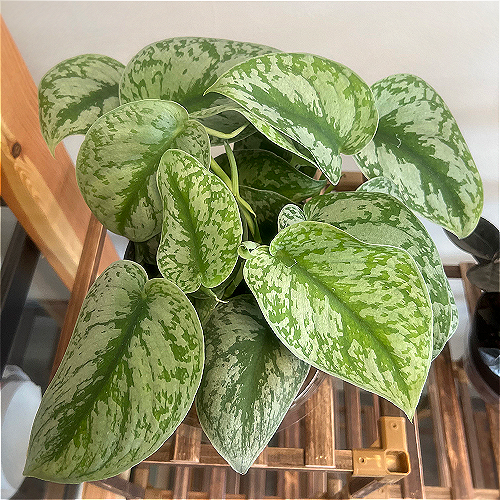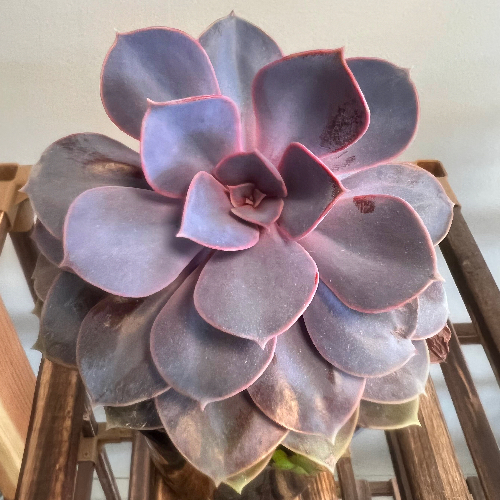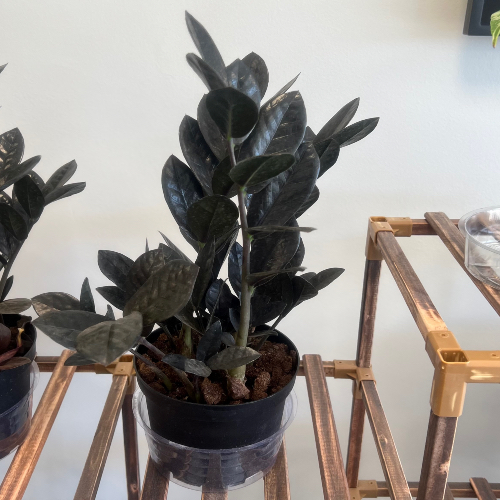Description
Scindapsus pictus ‘Exotica,’ also known as satin pothos, is a popular evergreen climbing plant in the Araceae family. It features large, heart-shaped green leaves with silver variegation. Although often confused with the Scindapsus pictus ‘Argyraeus,’ the ‘Exotica’ has larger and thicker foliage.
Despite common names like satin pothos and silver Philodendron, this plant actually belongs to the Scindapsus genus, not pothos or Philodendron. It shares similar growth habits, care, and appearance with pothos and vining Philodendron species, which can cause confusion. Like its relatives, plants in the Scindapsus genus are toxic to pets.
The ‘Exotica’ is a slow-growing and low-maintenance plant. It rarely produces blooms indoors. It thrives in bright, indirect light but can tolerate medium to low light. Direct sunlight should be avoided to prevent leaf burn.
To prevent root rot, plant the ‘Exotica’ in a loose, well-draining potting mix that retains moisture without becoming soggy. A mixture of orchid bark, coco peat, potting soil, and perlite works well. Water the plant when the top 2 to 3 inches of soil are dry, avoiding both complete drying out and consistent overwatering.
While native to tropical rainforests, the ‘Exotica’ adapts well to standard household temperature and humidity levels. It appreciates some added humidity but can thrive without it. Protect the plant from temperatures below 60 degrees Fahrenheit (16 degrees Celsius) and keep it away from drafts. It can be grown outdoors in USDA zones 10 through 12 or moved outdoors for the summer before bringing it back indoors.
Propagation of the ‘Exotica’ can be done through stem cuttings, although it may take some time due to its slow growth rate. While Scindapsus pictus ‘Exotica’ is an easy-to-grow plant, it can face common issues if its growing conditions are not optimal. Some things to look out for are:
Yellow leaves are usually a sign of overwatering or root rot. Avoid overwatering and allow the top few inches of soil to dry between waterings. If the plant is not overwatered but still develops yellow leaves, it may be underwatered or not receiving enough light.
Insufficient light can cause the plant to lose its silver variegation. Ensure that the ‘Exotica’ receives several hours of bright, indirect light to maintain its variegated appearance.
The ‘Exotica’ is a slow-grower, so minimal growth each year is normal. However, if there is no growth at all, it could indicate insufficient light or underwatering.
Curling leaves indicate underwatering. These tropical vines prefer slightly drying out between waterings but should not completely dry out.




